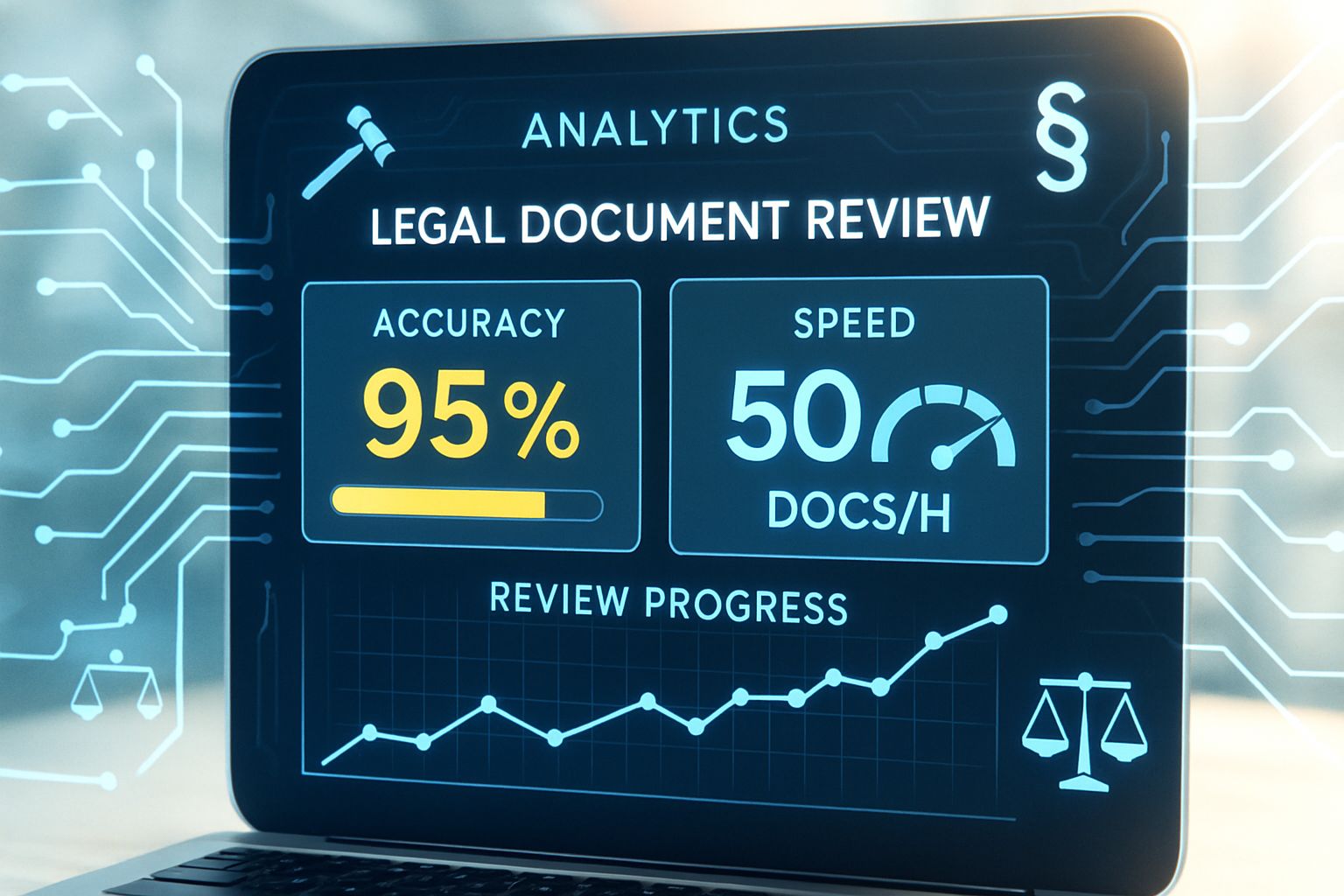
AI CERTS
40 minutes ago
Legal AI Sets New Speed Benchmark in Document Review
Market Growth Momentum Rise
Firstly, spending on intelligent review continues to surge. MarketsandMarkets projects the global segment to exceed USD 10 billion by 2030. Moreover, pandemic-era remote work accelerated cloud migrations, making scalable AI easier to deploy. Relativity, DISCO, and Everlaw all reported double-digit customer growth during 2024. Investors see similar trends across broader Legal Tech categories, injecting fresh capital into upstarts like Captova and Syllo. Consequently, competition pushes vendors to highlight dramatic speed metrics.

Key market drivers include relentless data growth, rising eDiscovery budgets, and mounting pressure to cut review spend. Additionally, corporate legal teams demand transparent analytics that justify AI decisions. These forces combine to keep throughput and accuracy on every RFP shortlist.
- Projected Legal AI market 2025: USD 2.1–3.1 billion
- Forecast 2030 market: up to USD 11 billion
- Average case data volume annual growth: 35 percent
These figures underscore sustained momentum. Nevertheless, bold speed claims require deeper technical examination. Therefore, the next section breaks down the numbers.
Speed Claims Explained Clearly
Throughput headlines often mix OCR page counts with classification document counts. Relativity’s aiR suite advertises “up to three million documents per day,” translating to roughly 125,000 documents hourly in ideal cloud configurations. Meanwhile, DISCO’s Auto Review lists 32,000 documents per hour, equating the output to 640 reviewers working in tandem. Nuix, partnering with ABBYY, reports 30,000 scanned pages per hour on a single server.
In contrast, Captova publishes marketing specs of 360,000 pages per hour on specialized infrastructure. Independent labs have not yet validated that figure. Furthermore, vendors rarely clarify whether totals include loading, OCR, analytics, or only tagging time.
Therefore, buyers should request granular metrics:
- Pages per hour for OCR ingestion
- Documents per hour for responsiveness coding
- End-to-end lead time from data load to production
Such breakdowns reveal the true impact on project timelines. However, speed alone means little without confirmed accuracy, which we explore next.
Accuracy Metrics Under Scrutiny
Vendors frequently tout “near-perfect” accuracy. Everlaw’s GenAI suggestions exceeded first-level human reviewers on recall across several litigation sets. Likewise, Syllo cites an average 97.8 percent recall, with some matters surpassing 99 percent. Moreover, Relativity reports customers “often seeing over 95 percent recall and 70 percent precision.”
Nevertheless, independent academics uncover variability. A recent preprint on legal research tools documented hallucination rates that could undermine privilege review. Additionally, dataset language, scanning quality, and concept drift all affect performance. Therefore, defensible sampling and continuous validation remain mandatory.
Summary statistics alone cannot guarantee reliability. Consequently, many firms pair automated review with targeted human quality control, ensuring defensibility before production. The following section weighs overall benefits against inherent limitations.
Operational Pros And Cons
High-speed Document Analysis offers clear advantages. Costs drop, review cycles shorten, and attorneys focus on strategy instead of rote tagging. Furthermore, AI surfaces thematic clusters, revealing narrative insights early in discovery.
However, trade-offs persist. Complex privilege rules, multi-lingual corpora, and heavy redactions challenge even the best models. Moreover, courts increasingly demand transparency around training data and sampling methods. Consequently, teams must maintain audit trails and produce validation reports on request.
Professionals can enhance expertise with the AI Legal™ certification, which covers defensible workflows and risk mitigation practices.
Balanced planning maximizes value while keeping compliance intact. Nevertheless, governance gaps still plague many rollouts, as the next section illustrates.
Validation And Governance Needs
Robust governance separates pilot success from courtroom disaster. Therefore, experts advise a structured checklist:
- Define the review task and success metrics
- Obtain sample-based precision and recall baselines
- Document model parameters and versioning
- Implement continuous spot-check sampling
- Archive logs for future challenge responses
Additionally, external advisors can perform blind audits to assure opposing counsel and judges. Meanwhile, regulators in several jurisdictions study potential guidelines for AI use in discovery. Consequently, early adopters that future-proof workflows may gain competitive advantage.
Strong governance builds trust and unlocks broader AI usage. Subsequently, stakeholders look ahead to next-generation capabilities.
Future Outlook And Steps
Generative models will soon draft privilege logs, suggest deposition outlines, and cross-reference regulatory frameworks. Moreover, tighter integration with knowledge graphs promises context-aware tagging that reduces false positives. Market observers expect consolidation among smaller Legal Tech vendors, while major platforms embed LLMs deeper into core offerings.
However, continuous evaluation will remain critical. Academic consortia plan standardized benchmarks for Document Analysis accuracy. Additionally, open-source tooling may democratize testing, letting firms validate claims without heavy engineering lift.
Firms considering adoption should pilot targeted use cases, measure real throughput, and refine workflows before scaling. Consequently, those steps position teams to exploit rapid innovation without compromising defensibility.
The landscape evolves quickly. Nevertheless, disciplined experimentation ensures benefits outweigh risks.
Conclusion
Leading review engines now process 50,000 pages per hour and beyond, transforming discovery economics. Furthermore, validated studies show AI can match or beat human recall in many scenarios. Yet, performance varies with task complexity and data quality. Therefore, robust governance, ongoing validation, and skilled oversight are vital. Professionals interested in advancing their mastery should consider the hyperlinked certification above to stay ahead of peers. Explore the credential and begin building a defensible, efficient AI-driven practice today.



